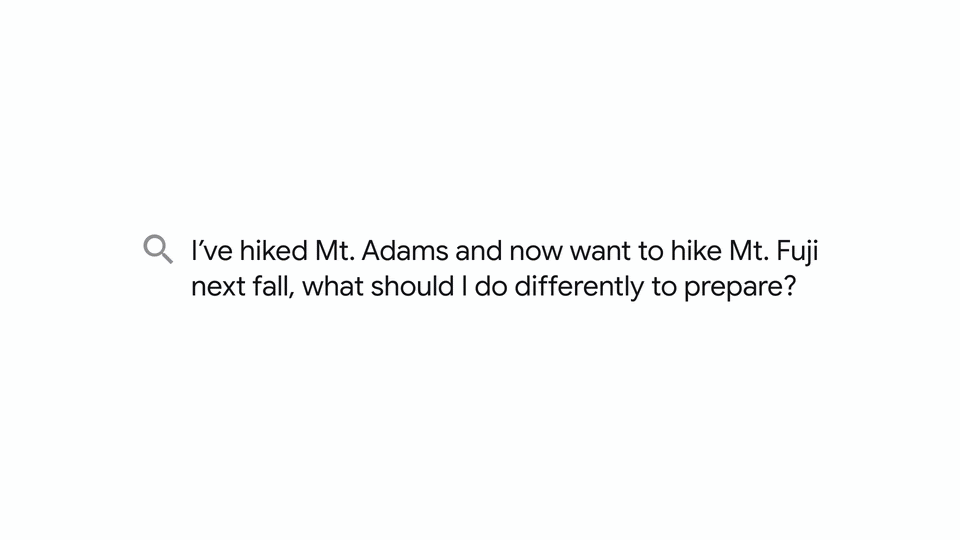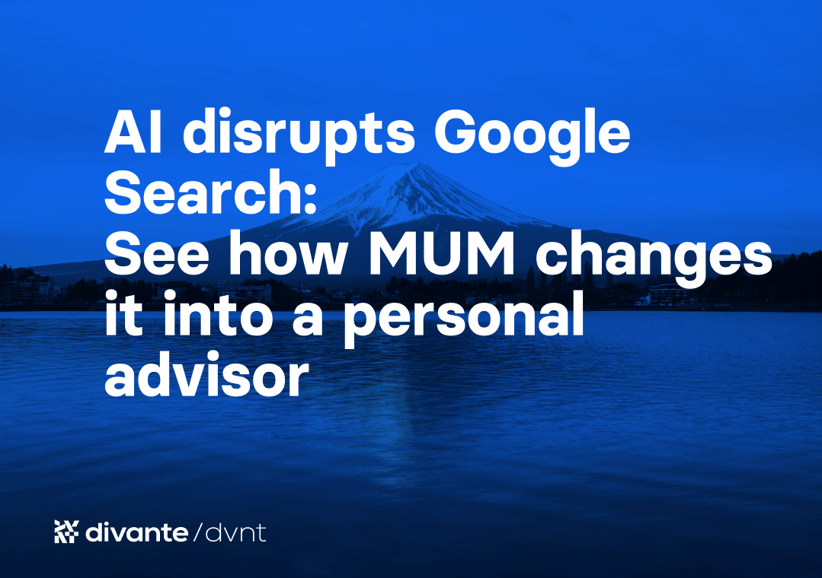Google’s I/O developer conference featured a group of new artificial intelligence-based solutions that the company has been working on over the past few years. The development in this direction strongly emphasizes that Google is moving towards a complete understanding and processing of user communication and thinking.
As we can read in materials “Google Multitask Unified Model (MUM) is a new technology specializing in answering complex questions that don’t have direct answers”. The main goal seems to be to enable search engine users to research complex tasks that would normally require multiple questions. In terms of practical application, it’s possible that MUM’s expert answers will show up at the top of Google Search.
This is not the first time that Google has developed something using natural language algorithms. In 2018, Bidirectional Encoder Representations from Transformers (BERT), a model of natural language, saw the light of day and added completely new possibilities for work. Now, Google is predicting that MUM will be 1000 times more powerful. It will be a linguistic revolution.
How Google MUM works
To illustrate how MUM works, Google uses the example of a hike. When you search for information on how to prepare for climbing, you don’t have to go to Google and think of a series of questions. Just ask once, and the search engine will analyze your question from different angles, predicting what you would like to find out and taking into account the nuances of your question.
Then, it walks you through the many things you need to consider. This sounds like a definite time saver as Google has measured people issue eight queries, on average, for complex tasks.
For example, this scenario was used: You’ve hiked Mount Adams. Now, you want to hike Mount Fuji next fall, and you want to know what you need to do differently to prepare. Since MUM is able to provide insights based on its in-depth knowledge of the world, it might highlight that, while both mountains are roughly the same altitude, it’s the rainy season on Mt. Fuji in the fall. So, you’ll need a waterproof jacket. MUM could also provide helpful sub-topics for deeper exploration, such as the best rated gear or the best training exercises, with pointers to helpful articles, videos, and images from around the web.

In short, Google MUM:
- Is based on transformer architecture, like BERT.
- Understands and generates language.
- Is trained across 75 different languages.
- Can perform many tasks at once.
- Is multimodal, which means it can understand information across text and images plus video and audio in the future.
What can you gain by using Google MUM?
Using MUM is not only associated with better searches. It’s a whole new type of search results.
This can change the way you think about content. Understanding and solving problems automatically by the system in search can make it, for example, out of the support responsibility.
For digital marketers, content managers, or product wizards, it’s extremely important to understand what users are looking for and what content they pay attention to. Such a development of the algorithms behind search engines maintains and increases the understanding of the consumer intent. Observing keywords and types of conversational search themes, you can track whether the brand is properly positioned with the content and branding used. The website and other materials can then be adjusted to it.
Google’s CEO, Sundar Pichai, says, “When people communicate with each other they do it across images, text, audio and video. So we need to build multimodal models (MUM) to allow people to naturally ask questions across different types of information. With MUM you could one day plan a road trip by asking Google to “find a route with beautiful mountain views.” This is one example of how we’re making progress towards more natural
At Divante Innovation Lab, we already have a lot of experience with the BERT algorithm and are very impressed with what’s possible with it. Based on BERT, we developed our OneBot tool, so we know how to use this technology and see great potential in MUM. We already have our heads full of ideas on how and where it can be used and what can be created based on it.
As with every big change, it can be an opportunity or a threat. Our team is already on it, discovering the ways to leverage MUM for eCommerce business. Want to learn more? Contact us.and intuitive ways of interacting with Search.”
From the information we already have, we can even conclude that “Search” will become “Research”. It will no longer be just a search bar to find information on the internet but will act more like a research assistant with expertise.
Using this algorithm in chatbot products can completely change the thinking and narratives of such solutions. Imagine that your chatbot sounds completely natural, recognizes images and videos, and what’s more, it can answer naturally regardless of the language.
As with every big change, it can be an opportunity or a threat. Our team is already on it, discovering the ways to leverage MUM for eCommerce business. Want to learn more? Contact us.
Published May 31, 2021












